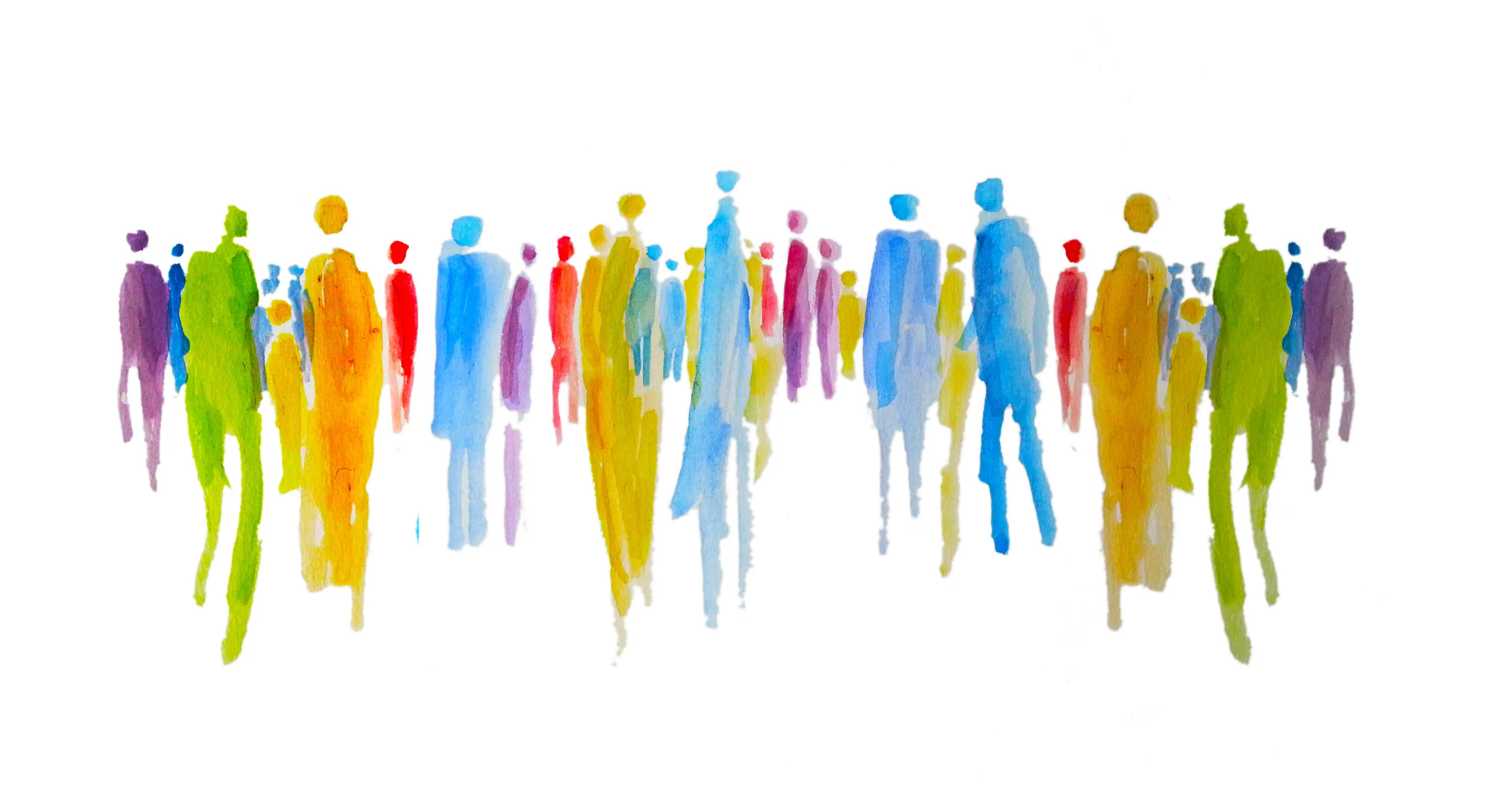As the value of diversity and inclusion becomes ever more recognized within and across organizations, the push for diverse hiring is growing, too. Of course, there has never been positive momentum that didn’t meet resistance, and the task of diverse hiring is no exception. It’s high time we debunked the myths around diverse hiring and explored the best way for an organization to succeed at this goal!
1. Redefine “Diverse Hiring”
Many of us have heard the term “diverse hiring” used in a derisive manner, usually an attempt to discredit the process. Some people associate “diverse hiring” with “unqualified hiring” or “lowering the bar,” perhaps believing that No way should anyone of lower skills or abilities be given preference to those of higher abilities based on gender, race, or beliefs! When such a misunderstanding occurs, perhaps the resulting resistance makes sense. But this association is a false equivalency, as diverse hiring is not tokenism or filling a quota with whatever diverse candidates are available. Consider this definition from Ideal instead:
“Diversity hiring is hiring based on merit with special care taken to ensure procedures are free from biases related to a candidate’s age, race, gender, religion, sexual orientation, and other personal characteristics that are unrelated to their job performance.”
In other words, diverse hiring might be thought of as a bias extraction! By ensuring diverse candidates will not have their diverse traits held against them, the hiring process inherently becomes more equitable.
2. Go Against One’s Own Bias
This step may seem obvious, but it doesn’t make it any less critical! We must keep in mind that people tend to hire those who fit the image of themselves, though such an instinct is often unconscious. To combat this bias, we should remind ourselves and others involved in the hiring process to look for complementary skills sets among the candidate pool (rather than unwittingly pursuing sameness).
3. Remember the “Two in the Pool” Effect
The Harvard Business Review determined that when the final candidate pool for a position has only one individual from a marginalized community, their chance of being hired is statistically zero, despite the candidate being as qualified as their fellow finalists. However, such a conclusion is not all doom and gloom! HBR also calculated that “[i]f there are at least two female candidates in the final candidate pool, the odds of hiring a female candidate are 79 times greater. If there are [at] least two minority candidates in the final candidate pool, the odds of hiring a minority candidate are 194 times greater.” By having at least “two in the pool,” the hiring process again becomes more equitable, and it helps ensure diverse candidates won’t be dismissed unconsciously because of their diversity.
4. Stop Aspiring to Hire the Unicorn
Successful hiring often means taking an objective approach, not aiming for an “ideal” candidate. While many of us would love to employ the titular unicorn who meets every exact qualification, the fact of the matter is that such a person… Well, they don’t always exist. It is thus worth looking critically at the relevant job description: Does this position really require a master’s degree? Does this position really need to be full-time? And so on and so forth! This step is particularly relevant to diverse hiring; research suggests that the content and wording of job descriptions can dissuade diverse candidates from applying because they don’t consider themselves to be the “unicorn” who meets every listed qualification.
The next step, then, is to address this dilemma of phrasing!
5. Be Intentional with Inclusive Language in the Job Posting
While it is critical we stop searching for unicorns, we must also ensure job descriptions aren’t written in a manner where only this hypothetical unicorn feels equipped to apply. After reevaluating the contents of a job description, there are numerous resources available online to help one write an equitable, unbiased job posting; Textio, for example, helps eliminate gender-biased terms. In a similar vein, these revised job descriptions should be made more available to diverse candidates, such as being uploaded to sites like Jopwell and Include.io.
6. Balance the Team
To continue our theme of looking past the unicorn, another critical step of diverse hiring is broadening our mindset toward a candidate’s “value.” “Value” is a fluid term, and yet it is often interpreted narrowly to mean looking at what a candidate can supply solely to the exact role for which they are potentially being hired. Now, such an examination is important; no one denies this. But we must also look at the value a hire can bring to the team as a whole, and diversity is a critical component of that value. The fact of the matter is that diverse teams are more creative and more productive, meaning a lack of diversity in our teams is a gap we want filled!
Furthermore, balancing a team through diverse hiring cannot stop at the lowest levels of an organization. When considering an individual for a promotion, such as to management, the overarching value of a candidate’s diversity should follow them; for example, “being a member of an underrepresented minority… [means] that person is more likely to be able to manage a multicultural team effectively,” which is an excellent skill for a team manager to have.
7. The Healthy Circle
The best part of recruited and retained diverse hiring? It generates a positive feedback loop. Forbes puts it well:
“[T]he more diverse talent you already have, the easier it will be to attract additional diverse talent, and the more likely it is that the diverse talent that you hire will feel valued and contribute more to the success of your company.”
Once effort is put into diverse hiring, it is a process that will sustain itself, which is all the more reason why taking the metaphorical plunge is worth it. Remember, diverse hiring is not about filling a quota with unqualified individuals. It is about taking action to remove systemic barriers that prevent diverse candidates from making the final cut or even applying in the first place.
Lastly, let us conclude with a three-pronged approach to addressing the argument that “diversity hiring means lowering the bar”:
Take a deep breath, then ask the resistant party why they associate “diverse” with “unqualified.” Point out that these terms are not synonyms, and that they are certainly not interchangeable. Are they implying an employee might be unqualified because of their diversity? Such an equivalence cannot be made, because an employee can easily be both diverse and technically-qualified at the same time—these traits are not mutually exclusive.
Ask the person voicing this concern if or why they’re thinking of diversity in terms of tokenism. Because it is true that employers have an obligation to understand the distinction between true diversity and tokenism when they are hiring! But if an organization is hiring diverse employees solely for superficial purposes, any issues that arise fall on the employer’s shoulders, not those of the diverse employees. Furthermore, diverse hiring does not equal tokenism, and such a distinction must be made clear.
Remind the resistant individual that our world is naturally diverse. If society was free of bias, diverse hiring would not be necessary, because diversity would automatically be reflected across employees. But society isn’t free of bias, which is why homogenous organizations predominate. We must directly address this bias through diverse hiring to level the playing field, thus allowing diversity to foster naturally, as it always should have been.
Diverse hiring means inclusive, equitable employment. Diverse hiring means choosing individuals who are qualified and bring unique value to an organization. Diverse hiring means fostering an environment that reflects the stunning, multicultural world we live in. In my mind? No goal could be more admirable for an organization to pursue.
Dima Ghawi is the founder of a global talent development company with a primary mission for advancing individuals in leadership. Through keynote speeches, training programs and executive coaching, Dima has empowered thousands of professionals across the globe to expand their leadership potential. In addition, she provides guidance to business executives to develop diversity, equity, and inclusion strategies and to implement a multi-year plan for advancing quality leaders from within the organization.
Reach her at DimaGhawi.com and BreakingVases.com.












